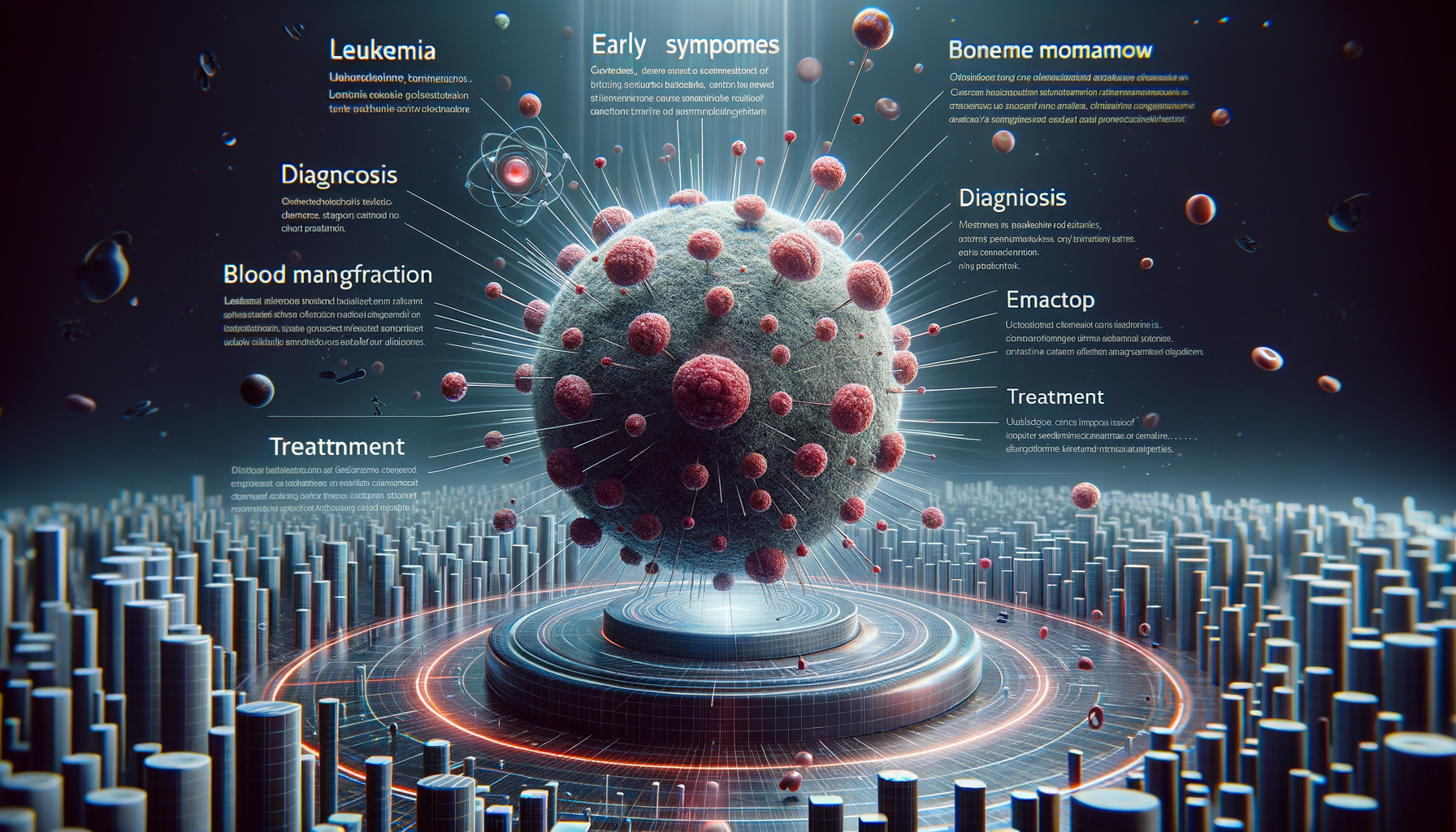Introduction to Leukemia
Leukemia is a type of cancer that affects the blood and bone marrow, leading to the production of abnormal white blood cells. This condition can significantly impact a person’s health, making early diagnosis and understanding of its symptoms crucial. This article will delve into the early signs of leukemia, its effects on blood and bone marrow, and the treatment options available based on the type and stage of the disease.
Early Symptoms and Diagnosis of Leukemia
Recognizing the early symptoms of leukemia is vital for timely intervention. Some common early signs include:
- Fatigue and weakness
- Frequent infections
- Unexplained weight loss
- Easy bruising or bleeding
- Pale skin
- Swollen lymph nodes
These symptoms occur due to the overcrowding of abnormal cells in the bone marrow, which interferes with normal blood cell production. Diagnosis typically involves blood tests to check for abnormal levels of white blood cells and bone marrow biopsies to identify cancerous cells. Early detection can significantly improve treatment outcomes and quality of life.
How Leukemia Affects Blood and Bone Marrow Function
Leukemia originates in the bone marrow, where blood cells are produced. In this disease, the bone marrow generates a large number of abnormal white blood cells, which do not function properly. These cells crowd out healthy blood cells, leading to a range of health problems such as anemia, increased risk of infection, and bleeding disorders.
The disruption in blood and bone marrow function can manifest as fatigue, frequent infections, and bruising, among other symptoms. The abnormal cells can also spread to other parts of the body, including the lymph nodes, liver, and spleen, causing further complications.
Treatment Options Based on Leukemia Type and Stage
Treatment for leukemia varies depending on the type and stage of the disease. Common types of leukemia include acute lymphoblastic leukemia (ALL), acute myeloid leukemia (AML), chronic lymphocytic leukemia (CLL), and chronic myeloid leukemia (CML). Each type requires a different treatment approach.
Treatment options may include:
- Chemotherapy: The primary treatment for many types of leukemia, aimed at killing cancerous cells.
- Radiation therapy: Used to target and destroy leukemia cells in specific areas of the body.
- Targeted therapy: Involves drugs that specifically target cancer cell abnormalities.
- Bone marrow transplant: Replaces diseased bone marrow with healthy cells.
The choice of treatment depends on factors such as the patient’s age, overall health, and how far the leukemia has progressed. Consulting with a healthcare professional can help determine the most suitable treatment plan.
Conclusion: Navigating Leukemia with Knowledge and Care
Leukemia poses significant challenges, but understanding its early symptoms, impact on the body, and treatment options can empower patients and caregivers. With advancements in medical research and treatment strategies, many individuals with leukemia can achieve remission and maintain a good quality of life. Staying informed and working closely with healthcare providers is key to navigating this complex disease.




Leave a Reply